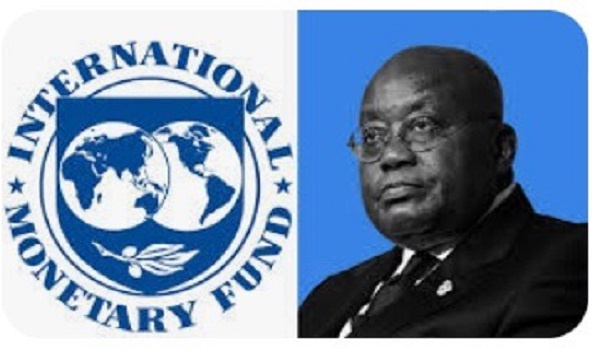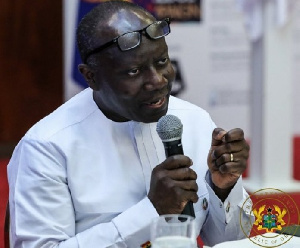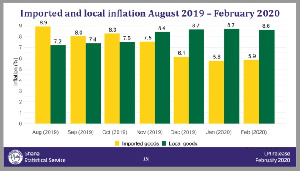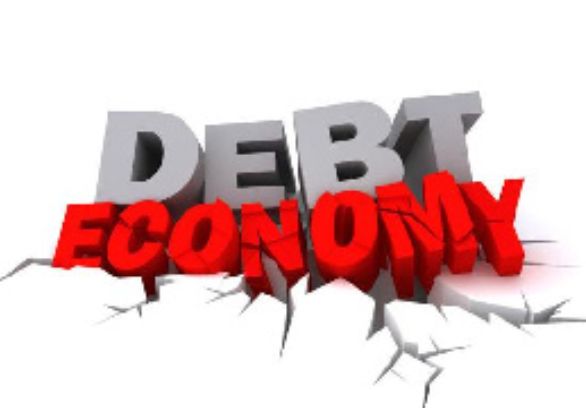From Nkrumah to Akufo-Addo: Here are all the 17 times Ghana ran to the IMF

On Wednesday, May 17, 2023, the IMF approved the most recent IMF bailout request from Ghana under the ruling New Patriotic Party, for some $3 billion dollars.
In this piece, we take a look at all 17 times Ghana went to the IMF, and under which governments. for financial aid.
Per information on the IMF’s official website – www.imf.org, this information was stated.
1966 to 1969:
The first IMF bailout request from Ghana happened in 1966 after the overthrow of Ghana’s first president, Dr. Kwame Nkrumah, by the then National Liberation Council (NLC).
At this time, the IMF and World Bank were invited by the new government, which had taken over, to manage the economy, supervise the privatization of state corporations, to turn them into profitable institutions among other things.
This bailout, which ended in 1967, was under a Standby Arrangement.
Ghana went to the IMF three different times after this, from May 25, 1967 to May 24, 1968, and then from May 28. 1968 to May 27, 1969, Ghana returned to the IMF.
From May 29, 1969 to May 28, 1970, another was agreed on, also on ‘Standby Arrangement’ basis.
1979 to 1980:
After series of corruption and economic mismanagement, and military coups, the economy of Ghana was down again.
After ‘Operation Feed Yourself’ under Ignatius Kutu Acheampong, from 1972 to 1978, things appeared to be moderately okay until the June 4 Revolution in 1979, led by the late Flt. Lt. Jerry John Rawlings when the economic situation hit the rocks again.
Ghana, again, went to the IMF for a Standby Agreement in January 10, 1979 to 1980.
August 1983 to 1992
From August 3, 1983 to August 02, 1984, August 27, 1984 to December 31, 1985, from October 15, 1986 to October 14, 1987 and then November 6, 1987 to November 9, 1988, Ghana experienced major food shortage that led the country to depend on donors and charity from across the world.
Ghana depended on the IMF to help the situation then, till then PNDC leader, JJ Rawlings invited the IMF to help with a Structural Adjustment Facility Commitment in November 6, 1987 and was extended in November 9, 1988 till it ended in 1992.
1995 to 2009:
During this period, global financial bodies, like the IMF, embarked on debt cancellation, which resulted in the creation and enhancement of debt relief schemes under the HIPC (Highly Indebted Poor Countries) Initiative.
The IMF supported Ghana from June 30, 1995 to May 2, 1999 and then May 3, 1999 to November 30, 2002.
After gaining support during this time under Rawlings, Ghana went back to the IMF in 2003 as a HIPC country, under then-President John Agyekum Kufuor.
Under Kufuor, Ghana borrowed from the IMF between May 9, 2003 and October 31, 2006 and then returned in July 15, 2009 to July 23, 2012
2015 to 2019
Under the John Dramani Mahama government, Ghana suffered a major power crisis, known as Dumsor, and Ghana run to the IMF again to borrow an amount of $918 million loan to strengthen the cedi and the struggling economy.
2022
Under President Nana Addo Dankwa Akufo-Addo, the government has acquired a $3 billion dollar loan, which, according to them, will help restore macroeconomic stability and debt sustainability in the country, as well as aid with the implementation of wide-ranging reforms to deal with the country’s current financial crisis.

Source: www.ghanaweb.com





